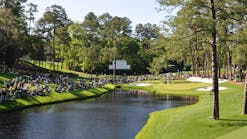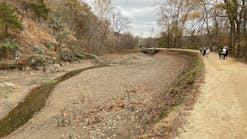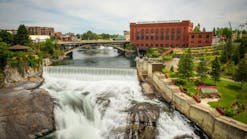GLWA Pilots First Buoy Project to Monitor Water Quality in Detroit River
The Great Lakes Water Authority press releasee
undefinedThe Great Lakes Water Authority (GLWA) Water and Field Services teams, in partnership with LimnoTech and the University of Windsor, has deployed the first buoy to the Detroit River to enhance water quality monitoring of its source water. The buoy, equipped with a camera that provides 20-second clips every 10 minutes, will provide data ahead of GLWA’s Southwest intake (where GLWA pulls water from to send to its Southwest Water Treatment Facility) and can serve as an early warning for changing water quality.
Michigan is experiencing more harmful algae blooms each year due to the warming of the Great Lakes, and more total and intense precipitation, resulting in increased runoff and combined sewer discharge and increased nutrient loading, among other factors. Harmful Algae Blooms
While there is currently not a cause for concern about algae blooms in the Detroit River, GLWA, which provides drinking water to nearly 3.8 million, or 40 percent of the state of Michigan, is proactively monitoring to help gather data for the long-term evaluation and optimization of its water treatment. Contaminants from harmful algae blooms entering water treatment plants could lead to facility shutdowns which could increase costs on long-term drinking water operations. GLWA’s proactive and real-time monitoring will keep drinking water uninterrupted and water treatment plants operating as usual.
“Working with our partners to collect this data is critical for monitoring and assessing source water quality and proactive management before any issue is detected,” said John Norton, Jr., Ph.D., director of Energy, Research and Innovation, GLWA. “This work exemplifies the regional collaboration envisioned when GLWA was founded and is a great example of how our innovative approach can use new technology to improve operational performance and provide value to our member partners.”
Recently deployed on the Canadian side of the Detroit River as a pilot, the buoy measures oxygen reduction potential, conductivity, temperature, pH levels, total algae, and more. It differentiates from other buoy projects, as they are typically installed to monitor areas already significantly impacted by algae blooms.
“The data is critical for monitoring and assessing source water quality and to help us collect baseline and seasonal data which can detect if any diversion or unusual peaks occur,” said Dr. Andrea Busch, management professional of Energy, Research, and Innovation, GLWA. “In addition, data will be used for long-term evaluation and optimization of GLWA’s water treatment system to ensure we continuously provide highest quality water.”
If any changes should occur in the water quality, GLWA’s team is equipped to address quickly and at 1.6 miles before the water will reach the intake, allowing enough time to address any potential issues as they begin to arise. After the test pilot is completed, GLWA and its partners will be able to determine if there is a need to measure additional parameters and add more sensors.
“Our interest in the GLWA buoy stems from our work with water utilities on the Canadian side of Lake St. Clair where we are monitoring algae blooms to help ensure the safety of drinking water,” said Mike McKay, executive director and professor, Great Lakes Institute for Environmental Research (GLIER), University of Windsor. “While algae blooms in the Detroit River are not currently a concern, the proactive steps being taken will provide GLWA with increas
The vessel was provided by the Real-Time Aquatic Ecosystem Observation Network (RAEON), a University of Windsor research collaborative funded by the government of Canada and deployed by LimnoTech. RAEON staff involved in the effort includes Todd Leadly and Katelynn Johnson; LimnoTech staff include Ed Verhamme; and GLWA staff include Mary-Lynn Semegen, Terry Daniel, Andrea Busch, Patrick Williford, Ronald Hayes, Andrae Savage, Pawan Kapila, Yao Kouassi, and Balvinder Sehgal.
For more information on GLWA, please visit www.glwater.org.






